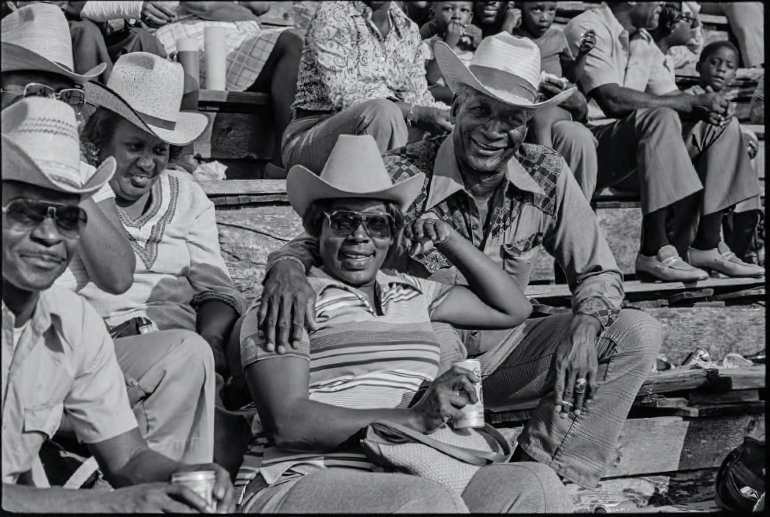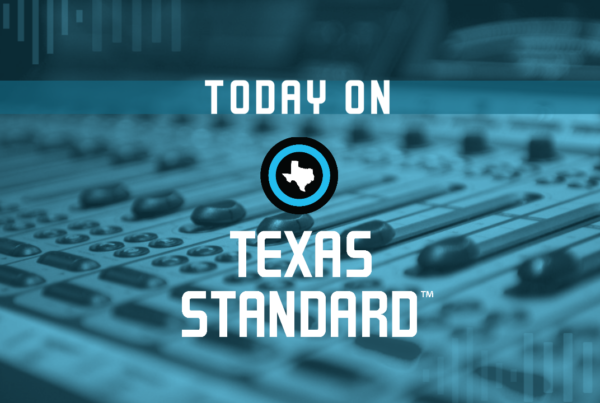The myth of the cowboy was grown deep in the heart of Texas, but for years so was the erroneous mainstream image of what a “real” cowboy looked like – one that often excluded women, queer people, Mexican-American vaqueros and, of course, Black cowboys.
In the rodeo world of the 1970s, Black cowboys tested their skill and competed at Black rodeos. And in the new book “Juneteenth Rodeo,” photos and moments from those rodeos here in Texas are coming to light after being packed away for decades.
Writer and photographer Sarah Bird spoke with Texas Standard about reconnecting with the photos, getting the afterward written by “Black Rodeo in the Texas Gulf Coast Region” author Demetrius Pearson, and the excitement of connecting the names and stories with the faces.
This transcript has been edited lightly for clarity:
Texas Standard: These images, as I understand it, were taken by you decades ago. Were they just packed away under your bed?
 Sarah Bird: Precisely. No – so, I just fell in love with Black rodeos in the late 70s and went to as many as I could in these tiny little rural outposts – Plum, Egypt. And I would bring it back to Austin; as you said, there was not a lot of awareness of Black cowboys at that point. So, you know, my friends and fellow graduate students would go, “I didn’t know there were Black cowboys.” And, as you know, I mean, that’s the sign you’ve got a story. This was an untold story. These were the unseen images.
Sarah Bird: Precisely. No – so, I just fell in love with Black rodeos in the late 70s and went to as many as I could in these tiny little rural outposts – Plum, Egypt. And I would bring it back to Austin; as you said, there was not a lot of awareness of Black cowboys at that point. So, you know, my friends and fellow graduate students would go, “I didn’t know there were Black cowboys.” And, as you know, I mean, that’s the sign you’ve got a story. This was an untold story. These were the unseen images.
And I was on fire about getting a book published to share with the world this remarkable what apparently was news. And at that point, no interest in Black cowboys. Unlike today, there is tremendous resurgence of interest. So I was told, no, no, and hell no. Multiple rejections.
So I packed them away. You know, my heart was broken; my bank account was broken. This was this was back in the days when, as you recall, photography was both laborious and expensive. And I just ran out of money, so I put them away. There they might have stayed forever and ever had it not been for a worldwide pandemic.
And then a rediscovery of some of these photos. Tell us a little bit about the images that you captured. You called them renegade rodeos. And along with the Juneteenth rodeo, there were many that you attended at the time that wouldn’t fit the definition of typical rodeo, as many people think of it.
As a newcomer to Texas, I fell in love with all the state’s oddities, and one being rodeos – but not mainstream rodeos, you know, not professional rodeos, which I found not too interesting, but the offbeat rodeos like I photographed. And charreada is not necessarily rodeos, but gorgeous spectacles. Then Native American rodeos, kids rodeos, old timers rodeos, gay rodeos, girls rodeos, as they were called then, prison and police rodeos.
So I was just fascinated by the worlds that sprang up around the rodeo arena. That’s what I was most interested in photographing. And through them, I found what I ultimately came to think of as the best of them all, which was the Black rodeos.
















